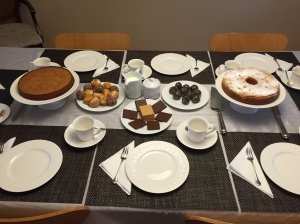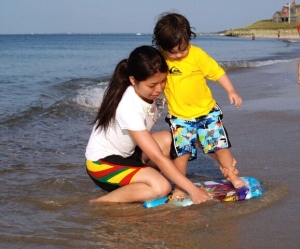Namaste!
Yoga brings to mind relaxing, serene and healthful thoughts. Although I am not a yogi, I felt compelled to introduce my children to yoga when they were just toddlers. They both took to it instantly at the age of two. They attended Elahi Yoga Studio for infants, toddlers and kids in NYC. It was a fun and playful way for them to explore and exercise their minds and bodies. It was an environment in which they felt at home, played, imagined, learned, relaxed and were plain happy. They practiced their breathing and poses and learned to concentrate in the most natural, soothing and supportive setting. Thanks to the non-competiveness of yoga, they understood it was alright to make mistakes or not be able to keep a pose as long as their friends. It was all about fun and self-discovery. They quickly discovered that their bodies could easily do some poses and with practice, their bodies could do other more challenging poses. Ergo, self-discipline. With every new pose, their self-esteem was boosted and their self-confidence was increasingly evident.
Yoga was great for their minds and bodies, and in hindsight, I can say that yoga was a way for them to learn more about other languages and cultures and gain a broader understanding of the world they live in.
An added bonus: yoga helped them excel in other physical activities and sports.
Mind, Body and Family Fun:
The animated poses such as tree, dog, cobra, windmill and table helped them understand their own strength, flexibility, coordination as well as body awareness. They learned how to focus and concentrate at an early age. Yoga is a family-friendly activity and much fun can be had. If you are a yogi parent, you can enjoy your portable passion with your children everywhere you go. If you are merely a “spectator”, you can celebrate your child’s progress everywhere they go.
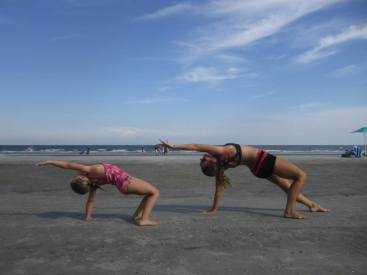
Family Fun – Mother Daughter Yoga
Vocabulary in the Target Language
The child-friendly names of all the poses lend themselves to a fun and interactive way to learn words in a target language. For example: cat, bridge, table, waterfall, butterfly, bird, tree, squirrel, hero, candle, frog, dog, windmill and airplane are all words in a toddler and pre-schooler’s vocabulary. We practiced these poses regularly AND practiced the words for the poses in French, German and Spanish – and still had fun!!! This is an easy way to complement your children’s language acquisition and reinforce vocabulary!!
They also learned to say a few words in languages they did not know, such as the Hindi words “namaste” “om shanti” and “chaturanga” and the Persian word “elahi.” Learning words in a different language typically motivates children to learn more words and to stay onboard their language endeavor!!
World Instruments:
The Singing Bowl was one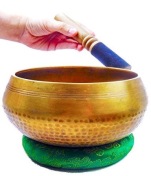 of their favorite instruments. when they went to Yoga. It is an intriguing instrument with an unusual sound that undoubtedly captures children’s attention. They learned that it originated in Tibet – which in turn, piqued their curiosity as to geography. Available on Amazon.com
of their favorite instruments. when they went to Yoga. It is an intriguing instrument with an unusual sound that undoubtedly captures children’s attention. They learned that it originated in Tibet – which in turn, piqued their curiosity as to geography. Available on Amazon.com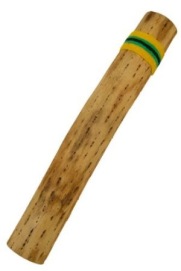
The Rain Stick sparked interest in geography as well. I have had multiple opportunities to stop with my children and listen to an Andean group of musicians play at major NYC subway stations. My little ones were always able to quickly identify the Rain Stick as one of the musical group’s instruments. Making the connection between their Yoga class and the Andean music made the experience so much more memorable for them. Also available on Amazon.com
Physical Activities and Sports
Yoga became the precursor to Tae kwon do for my older child, while my younger child has expressed an interest in taking up Fencing. Both Tae kwon do and Fencing require, the flexibility, strength, concentration, balance and coordination they already bring to the table. I find it interesting how they both gravitated to activities that require the skills they have already keenly developed.
The physical flexibility that children develop while practicing yoga, allows them to endure the challenges to the various muscle groups involved in learning Tae kwon do, Fencing and Gymnastics. Yogi children will be aware of their bodies and understand how their muscle groups function which are key elements in physical activities and sports such as Martial Arts, Fencing and Gymnastics. Balance and coordination are fundamental in yoga as well as other physical activities and sports. Accordingly, the cute balancing poses yogi children proudly display as preschoolers actually promote the mental and physical poise necessary in future physical activities and sports.
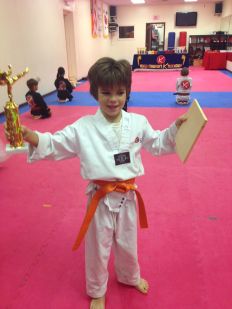
One proud yogi/martial artist!
It is said that yoga helps provide building blocks for the future. In fact, in our case, it did very early on in my children’s lives. I never imagined all of the exciting benefits yoga would offer my boys when I signed them up for their toddler yoga trial class!!!
My blog is dedicated to providing inspiration and resources to and for parents, caregivers and teachers when looking for ways to complement a child’s language learning. To read some of my many blog posts that discuss this topic, please click here, here , here and here. My tips are applicable in any target language, so I welcome you to read the various tips I have provided for the various World Languages I blog about. Enjoy!!
Namaste!


